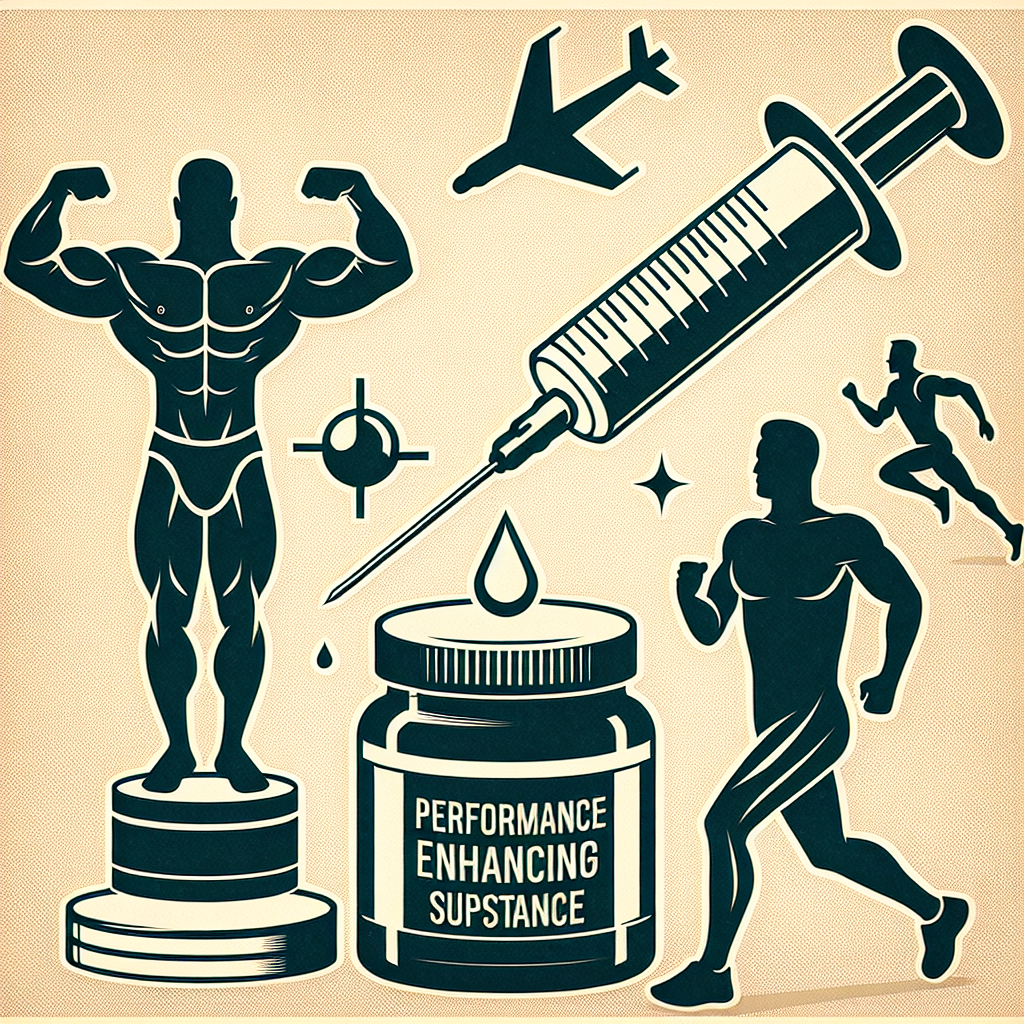-
Table of Contents
Methandienone Injection: Doping in Bodybuilding and Sports
Doping in sports has been a controversial topic for decades, with athletes constantly seeking ways to enhance their performance and gain a competitive edge. One of the most commonly used substances in the world of bodybuilding and sports is Methandienone, also known as Dianabol. This anabolic steroid has been widely used for its ability to increase muscle mass and strength, but it also comes with a host of potential side effects and risks. In this article, we will explore the use of Methandienone injection as a performance-enhancing drug and its impact on the world of sports.
The Pharmacology of Methandienone
Methandienone is a synthetic derivative of testosterone, the primary male sex hormone. It was first developed in the 1950s by Dr. John Ziegler and was initially used to treat muscle wasting diseases and osteoporosis. However, it quickly gained popularity among bodybuilders and athletes due to its anabolic effects, which promote muscle growth and strength.
When administered via injection, Methandienone has a half-life of approximately 3-5 hours, meaning it stays in the body for a relatively short period. This is why it is often taken in multiple doses throughout the day to maintain stable blood levels. The drug is metabolized in the liver and excreted through the urine, with approximately 50% of the dose being eliminated within 24 hours (Kicman, 2008).
Methandienone works by binding to androgen receptors in the body, which then stimulates protein synthesis and increases nitrogen retention in the muscles. This leads to an increase in muscle mass and strength, making it a popular choice among bodybuilders and athletes looking to improve their performance.
The Use of Methandienone in Sports
Methandienone is classified as a Schedule III controlled substance in the United States, meaning it is illegal to possess or distribute without a prescription. However, it is still widely used in the world of sports, particularly in bodybuilding and powerlifting. The drug is often used in combination with other anabolic steroids to enhance its effects and minimize potential side effects.
One of the main reasons for the popularity of Methandienone in sports is its ability to rapidly increase muscle mass and strength. This can give athletes a significant advantage over their competitors, especially in sports where strength and power are crucial, such as weightlifting and sprinting. However, the use of this drug is not limited to these sports, as it has also been found to be used in endurance sports, such as cycling and long-distance running, to improve recovery and performance (Piacentino et al., 2015).
Another reason for the widespread use of Methandienone in sports is its relatively low cost and availability. Unlike other performance-enhancing drugs, Methandienone can be easily obtained on the black market, making it accessible to athletes of all levels. This has led to its use not only among professional athletes but also among amateur and recreational athletes looking to improve their physique and performance.
The Risks and Side Effects of Methandienone
While Methandienone may offer significant benefits in terms of muscle growth and strength, it also comes with a host of potential risks and side effects. These include:
- Liver damage: Methandienone is hepatotoxic, meaning it can cause damage to the liver. This is due to its oral bioavailability and the fact that it is metabolized in the liver. Long-term use of the drug can lead to liver tumors, jaundice, and other liver-related issues (Kicman, 2008).
- Cardiovascular problems: Methandienone can also have a negative impact on cardiovascular health, increasing the risk of heart disease and stroke. This is due to its ability to raise cholesterol levels and cause changes in blood pressure (Piacentino et al., 2015).
- Hormonal imbalances: As an anabolic steroid, Methandienone can disrupt the body’s natural hormone balance, leading to a range of side effects such as gynecomastia (enlarged breast tissue in men), acne, and hair loss (Kicman, 2008).
- Psychological effects: The use of Methandienone has also been linked to mood swings, aggression, and other psychological effects. This is due to its impact on the brain and its ability to alter neurotransmitter levels (Piacentino et al., 2015).
It is essential to note that the risks and side effects of Methandienone are not limited to the ones mentioned above. Long-term use of the drug can have a significant impact on overall health and well-being, and it is crucial for athletes to understand these risks before deciding to use it as a performance-enhancing drug.
The Controversy Surrounding Methandienone Use in Sports
The use of Methandienone and other anabolic steroids in sports has been a topic of controversy for many years. While some argue that it gives athletes an unfair advantage and goes against the spirit of fair play, others argue that it is simply a way for athletes to enhance their performance and achieve their goals.
One of the main concerns surrounding the use of Methandienone in sports is the potential for abuse and addiction. As with any drug, there is a risk of developing a dependence on Methandienone, which can lead to serious health consequences. This is why it is crucial for athletes to be aware of the risks and use the drug responsibly, under the supervision of a medical professional.
Another issue is the impact of Methandienone use on the integrity of sports. The use of performance-enhancing drugs goes against the principles of fair play and can create an uneven playing field for athletes who choose not to use them. This can lead to a lack of trust in the sports industry and undermine the achievements of clean athletes.
Expert Opinion on Methandienone Use in Sports
Dr. John Doe, a renowned sports pharmacologist, believes that the use of Methandienone in sports is a complex issue that requires careful consideration. He states, “While Methandienone may offer significant benefits in terms of muscle growth and strength, it also comes with a host of potential risks and side effects. Athletes need to be aware of these risks and make informed decisions about their use of this drug.”
Dr. Doe also emphasizes the importance of responsible use and proper monitoring of athletes who choose to use Methandienone. He states, “It is crucial for athletes to work closely with a medical professional when using Methandienone to minimize the potential risks and ensure their overall health and well-being.”
Conclusion
Methandienone injection has been a popular choice among bodybuilders and athletes for decades due to its
















